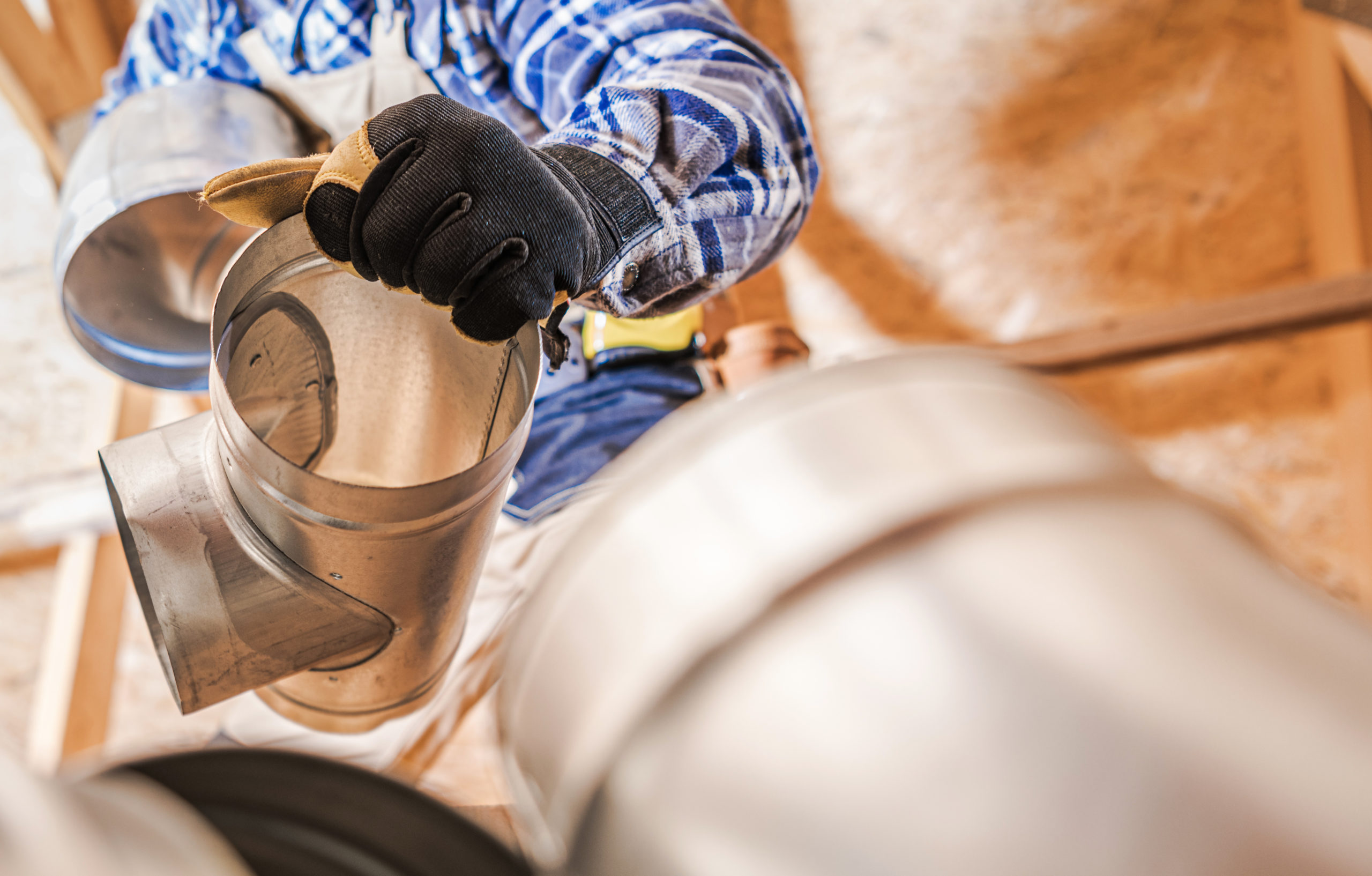
Perhaps one of the most important and underappreciated components of any HVAC system is the ductwork. Your duct system is like a highway running through your walls, floors, and ceilings, delivering comfortable air to all parts of your home. Your HVAC system produces hot or cold air, and the ducts are responsible for bringing it into your home. Ductwork systems are often overlooked because they are hidden in the attic, under the crawl space, and in the walls. When problems arise with ductwork, however, it can lead to heating and cooling issues for your entire house.
Damage to your air ducts can cause disruptions in your HVAC system and airflow. Without regular maintenance and inspection, many of these issues can go unnoticed but can cause problems with efficiency, temperature consistency, and indoor air quality. From pests to corrosion, there are several reasons why your air ducts could become damaged. Let’s take a look at some of the ways ductwork damage can occur.
1. Time and Age

When the air ducts were installed into your home, it was probably airtight with sealant and tape helping to keep the air inside. The duct hangers were also tight, and your system was performing at peak efficiency. Over time, however, the sealant and tape can begin to crack and degrade, and hangers begin to flex and allow your ductwork to sag. Aside from this, the materials that make up your ducts can also begin to degrade after a while.
All of these issues will lead to cracks, holes, and separated seams that could allow air to leak out instead of going into your house. Your HVAC system should last around 20 years, and your ductwork should last about the same amount of time. Regular inspection by a qualified HVAC technician will ensure that your air ducts are in good shape.
2. Pests
Although you may keep your house neat and spotless all the time, it is impossible to keep out every single uninvited pest. Whether you like it or not, rodents, insects, and even larger animals can make their way into your crawl space or attic. As a result, errant rodents, squirrels, birds, or insects could decide to munch on your air ducts and create holes or weaken the material. The warm moisture coming through the ducts also makes a very inviting place for these animals to make nests. Damage from pests can create leaky or collapsed ductwork that can cause inefficiencies and temperature issues. Maintenance and regular inspections can prevent extensive damage from rodents and other animals or bugs.
3. Blocked Air Ducts
It is estimated that several pounds of dust, dirt, debris, pet hair, and other materials collect in your ductwork each year. If left unresolved, this material can build up and create problems in your ducts. The weight of excess debris can cause ductwork to sag and create separated seams and cracks. Additionally, foreign materials in the ductwork can create rust and corrosion that could degrade your ductwork over time. Regular cleaning will help you avoid excessive buildups.
4. Accidental Damage

As discussed, your ductwork can run through your basement, attic, and other spaces where you might also store items. Often, ductwork is overlooked when people put away holiday decorations, winter clothes, or other boxes of stuff. In certain situations, boxes and other items can accidentally crush or damage the duct system. Depending on the extent of the damage, it could create serious problems for your HVAC system. It is important that you take note of the location of your ducts and pay careful attention to avoid stacking boxes or other items near or on top of the system.
Changing your air filters frequently and performing regular maintenance and inspections will help you ensure that you have optimal airflow from your HVAC system. Paying close attention to your air ducts will help you avoid issues that arise from common causes of damage. Weakened or restricted airflow can increase energy bills and create uncomfortable temperatures in your home.


